
Photo: SF Business Times
I couldn’t wait to tell Mrs. HIStalk that I had just spoken to a doctor, a lawyer, a PhD in physiology and endocrinology, and astronaut. Then, to casually mention that it wasn’t a conference call, it was just one man – Don Holmquest, president and CEO of the California Regional Health Information Organization. The timing of our conversation was fortuitous since CalRHIO just announced an agreement with California’s association of retired public employees (CalPERS) to endorse CalRHIO for its members. CalRHIO is not your typical RHIO – it’s statewide, well supported, and cautious about seeking a business model that will keep it operating once the grant money is gone. Thanks to Don for making himself available for the readers of HIStalk.
Tell me about CalRHIO.
We started out in 2005 with the intent of becoming a state-level health information exchange. That’s a term used in a study that we’re a part of that AHIMA is doing, so it’s a comfortable term to us.
In California, we had the Santa Barbara local RHIO. There’s one down in Santa Cruz. Santa Barbara did a little bit of exchange. Santa Cruz has been doing for some time a push model of results and e-prescribing and other stuff. Those were clearly regional efforts. There was a sense that, for us to really get California involved in health information exchange, you needed a state-level organization.
We raised some grant money; spent most of it, frankly, doing base level consensus-building and education; and held multiple summits around the state and involved something like 60 organizations and about 1,000 people who participated in meeting and work groups. The end result of that was the creation of a non-profit California corporation and a board of directors of key executives from the various stakeholders. That entity is charged with going forward and creating this healthy information network. To my knowledge, nobody else is attempting that on a state level.
Is the work of CalRHIO mutually exclusive with the work of the local exchanges?
Absolutely not. Our position from the start is that we wanted to provide whatever we could to make life easier for local activities to develop and mature.
As we looked at it very carefully, we did a lot of interviewing of experts in the field, leaders, and vendors. I think it became obvious that the hardest thing is to pick the right technology platform and the financing.
That’s why we use the metaphor of a utility. If you try to take an undeveloped world and country and bring it into modern times, it would be nice if there was electricity out there for people to use. We are taking the problem of creating a good health information platform with all the right appliances and applications and privacy and security so that any region that wants to can use that as one of their building blocks.
There’s still plenty of work for the regions to do getting the local data providers to agree on data sharing, governance, developing the provider network, and so forth. We want to make it as easy as possible for these RHIOs to develop because, thus far in California, we’ve not had a lot of success in these regional efforts in getting to the point of achieving data exchange.
How many employees does CalRHIO have and what do they do?
We’re a pretty small shop. We’ve got about six people working on the core activity of building the platform that will do whatever we want it to do.
We do have one grant from Blue Shield to try and support some health exchange efforts in the safety net community. We have taken the money from Blue Shield and turned it around and made grants to three small safety net organizations.
For the most part, we have been working on trying to get the technology vendors selected and get the kind of endorsements it will take to make the business model work. That’s why you saw the CalPERS release recently. It took us quite a few months to get those guys on board. Once they finally understood what it was about, they did what they should do and what all purchasers should do, which is tell their health plans, “We want this for our employees.”
Describe what the CalPERS endorsement means.
What it really does is, from the most important perspective of all — the organization that has employees they value whose care they care about and whose cost they pay — it achieves that purchaser saying, "We want this capability for our members, we’re willing to pay for it, and we want you as our agent to support this and enable it." They are basically telling their health plans to sit down with CalRHIO and work out a deal.
Our health plans are not by any means the only payors we will look to for support. Anybody that makes use of our network and receives financial benefit will be expected to pay some appropriate share of the cost. If you look at an environment where you have hospitals using our network to distribute laboratory results or radiology results or whatever, then we would expect those hospitals to pay for that service. I can promise you it will be cheaper than what they’re doing now using faxes and printers and couriers.
Santa Cruz is doing push. In Delaware’s DHIN, they started with Medicity and Perot on the push part of it and will be moving to the information portal fairly soon. We decided to go the other way and start on the information portal and deliver that information to emergency rooms as a start. In that environment, the entity that benefits, in terms of better patient care and cost savings, is the purchaser, so that’s either a health plan or self-insured plan. If it’s an uninsured patient, then it’s between the hospital and patient who pays. If it’s a capitated medical group that has risk for emergency room services, they may be the entity that’s appropriate to pay for the information package that was delivered.
Some people would argue that the pay-for-use model discourages use and the philanthropic model makes more sense for a public good like an information exchange.
I wish it were possible. I don’t believe it is. We’ve not found a good example of where that’s worked. If you can show me anywhere in healthcare where a substantial body of services is being paid for by philanthropy indefinitely over the long term, I’d love to hear about it.
Frankly, I don’t see many states out there that have money to spend on this. Certainly the federal government has taken a position, for the most part, that health information technology is like plumbing and air conditioning – it’s part of the cost of doing business and, if you’re a medical group or hospital, you’ve got to pay for it.
I’d love to see that, but we don’t think it’s possible. We’ve got a state here with 37 million people and the eighth largest economy in the world and there’s nobody stepping up to do that. We had some early philanthropic support, and when you talk to them about doing something longer term, the position we’ve heard most often is that, “We’ve really enjoyed giving you seed money and it’s great what you’re doing, but you can’t keep coming back to us.”
The original projection was that CalRHIO would need $300 million to build the network. That cost is upfront before you can start collecting usage fees. Where will you get that upfront money in a tough credit market?
You’ve got to show a very robust business model. You’ve got to show that you have organizations that have contractually committed to paying for the information you deliver and you monetize that.
There are very smart people out there who know how to raise money for a good project. Lot of interest in things that are infrastructure in character, lot of interest in healthcare … it’s probably one of the few growing parts of our economy and, as you know, it’s going to grow for a lot of decades.
Everybody is interested in something that saves money. There are few strategies out there than you can go to, other than a health information exchange, that’s a pretty solid likelihood that you’re going to save money. I’ve seen PET scanners and MRIs and all sorts of procedures that folks have hypothesized are going to save money, and the feds will tell you that none ever do. But if you look at putting more information in front of a doctor when he needs it, there are some pretty solid studies that say you’re going to save money.
The Smart Health board member said those savings estimates for health information exchanges are overestimated, even though he wasn’t against the concept. Do you agree?
No. I know the man. I’ve been to some of their meetings. You’ve got to remember that this is a set of interviews occurring at the time of shutdown of one of the early regional RHIO efforts and I’m sure they’re all very disappointed about it. They tried hard to get people to see the benefit.
I think what that tells you is that it’s harder to show demonstrable benefit when you’re starting on a small scale, one project at a time. They’re trying to get one small region, maybe three or four hospitals and some other groups, exchanging data. It’s a lot harder to demonstrate savings and improve quality than doing it over 338 hospitals and 98,000 physicians.
So I think in that context is probably why that particular individual was making that comment. He’s a CEO, a very smart guy, and on the board of a big system here. If you read further in the article that quoted him, he still says it should be done. You can’t take just part of it out of context.
Back to the previous question, what kind of organizations would be interested in financing CalRHIO’s upfront costs?
This sounded a lot easier six months ago, nine months ago, but hedge funds, private equity groups … right now, there’s not a lot of deals on the street. There’s a lot of money out there that needs a place to go. If you offer a rather new opportunity with a solid business model and a solid need, I can tell you the advisors we’re talking to is that it’s easier to get more money than less.
We’re not looking for huge quantities. We’ve actually had conversations with people with that kind of money. Some are very interested in doing well by doing good, so those are the people we’re predominantly looking to. I’ve not found anybody yet who’s said that they couldn’t find that money. It’s probably a question of the cost.
Given David Brailer’s former and current job, I would think he’d be interested.
We know David pretty well. His office is about a mile and half away. He’s a good friend of many of our stakeholders. My sense is he’s largely focused on for-profit companies, particularly those that are moving toward a liquidity event of some sort, or are early stage and need that extra round of capital to go to the next level. Investing in a non-profit where your only return is interest – I just don’t know. If I were David, after all he’s been through, he might be very careful.
So you’re talking about servicing the debt, not offering equity?
Right. Let’s be real clear about what we’ve said about the $300 million. That is the pool of capital that will be needed, according to our very detailed planning, to get us to the point where revenues exceed expenses. So we’re looking at borrowing that high-risk, high-interest capital initially to kick things off. We start building on our Phase I delivery to emergency departments.
But at some point where we now have assets and revenues that meet minimum requirements, we will, as quickly as possible, turn to tax-exempt bond financing. We’ve had conversations with the financial advisors to those issuing authorities. They like to issue bonds for the right reasons. As soon as we can, we would move to that — pay off the high debt we got started on, then we would be run on tax-exempt bonds. Burning through, if you will, something less than $300 million, our projections are at that point that we will be self sustaining and will continue to pay that debt back. At some point we will be debt free and we will be sustainable.
How does CalRHIO snap into place with national efforts?
The national effort is laudable and it will be great when someone is seen in an emergency room in California and they’re from Missouri. It will be great if we can get their information from Missouri.
I would predict that the flow of information inbound or outbound across state lines is going to be a small percentage of the critical information that passes among communities in the state. California doesn’t have very many border cities where the community spans a state line – maybe Reno. So we think the first problem we want to solve is the needs of Californians who find themselves someplace they didn’t expect to be or sick when they didn’t expect to be and their information is available. If they happen to end up in New York and somebody there pings the national network and we can supply the feed for that, that would be great.
We see that as quite a bit further down the line. You’ve got to get California connected first. Youv’e got to stimulate the creation of regional communities if that’s how it ends up going. Quite honestly, I’m not sure every region will spontaneously create its own RHIO. It may be a task we have to take on. We have fairly substantial cities here in California that have no RHIO effort underway at all. We will probably have to go into that community and build the equivalent of a regional RHIO to get information up and running. If we can get the state connected, then we will clearly be delighted to push that information over the national network and pull in information.
It would seem that you have an advantage since local RHIOs are usually led by at least two strong competitors that don’t trust each other.
Absolutely, absolutely. If you take a multi-hospital system — and we’ve got some here in the state that have 30-plus hospitals, some with more than that — for them, if they can get into an information exchange environment that spans multiple communities, then that distributes the risks from various competitors because the benefits far outweigh any one competitor that might be out there. We think that’s a strong benefit.
At some point, presumably, with the Sutter system, Catholic Healthcare West, Tenet, Kaiser – those entities are competitors, but my belief is that ultimately these institutions will do what’s right for the patient. I know there are competitive issues out there, but at some point, the sheer good outcome from this will outweigh those competitive interests and at some point, hopefully, the public becomes educated about how important this is and simply is not going to tolerate those kinds of self-focused concerns.
Should information exchanges be a back-end utility without consumer involvement, especially with regard to privacy?
We sort of favor the consensus approach. We have a board that includes a little bit of everybody, including the most recent president of AARP. We have a lawyer on our board from a privacy advocacy organization. We have union representatives, hospitals, medical groups, IPAs, multiple hospitals, hospital associations, and health plans.
We think everybody that’s got a stake in this needs to be listened to, have an opportunity for influence. We will operate the fundamental utility, but it has to be governed by the appropriate policies. That’s the first thing we’ve done is that high level stakeholder governance body. The second step is to build the tool that you’ll need to get where you want to go.
Can data sharing projects succeed without an overhaul of state and federal privacy regulations?
It certainly would be easier if we had a more uniform approach to privacy. We’re prepared to live with what we’ve got right now. Standards aren’t perfect and privacy laws are imperfect and often inconsistent and that makes it difficult. We don’t think you can wait until all that is resolved.
Frankly, I think it will be easier to resolve when people can see why it’s important. Right now, patients find their paper records that were buried in paper silos are now buried in electronic silos. They’re worried about privacy and privacy is a huge problem with paper medical records.
When people can see that the health information exchange can protect their privacy, probably better than what they experience today, but at the same time, give them access to their medical records whenever they need them, wherever they’re scattered … I think it’s a question of time, this incremental process back and forth, back and forth – it’s iterative. One small baby step at a time, get smarter, get better.
We take an approach that we are not going to be a standards-setting organization. We’re not even going to be a strong enforcement organization. In order to connect to an important data source and have to deal with interfaces that are non-standard, with HL7 versions that are far from up to date — we will do it. We will encourage people to be as up to date as possible and use the current standards, but our job is to get that information and move it into the appropriate format and get it flowing to where it should be. Over time, I think we will move to some consistency.
To your original question on privacy, we are going to take as conservative approach as we possibly can. We don’t want to foul even the most conservative of requirements. We can talk about opt-in, opt-out, and the advantages and disadvantages of each. We are going to be using basically an opt-in on an event-by-event basis so that every time that a patient is seen and there’s an interest or need in getting their information, the providers will not even be able to search for it until they have the consent of the patient to search for it.
Once a list of what their information is and where it’s located is obtained, we will again get their consent before we pull information from each of the sources. They could say "this is fine, this is fine, but don’t get my information from this facility – it’s not relevant or I’d prefer to keep it private." That lets you get started while the whole country comes to some sort of equilibrium about what’s the balance between access and privacy.
I assume there’s break-the-glass capability for emergencies.
Assuming that’s what the law permits, and of course HIPAA does, absolutely. You can’t function in an emergency environment if you can’t get past the patient who’s comatose or unconscious or irrational or whatever. Yes, absolutely — we’ll have the break-the-glass option.
One shaky information exchange could have a breach that would cause headaches for all of them. Is there a need to have them become covered entities or to be overseen by some third party to ensure standards?
The simple answer is yes. We would be comfortable with that.
We’ve been using the metaphor of being a utility, but frankly, one of the characteristics of a utility that we’re comfortable with is oversight, accountability, and regulation. We’re going to be moving data around and getting it from other RHIOs. It would be great if we had high confidence that they have met the appropriate level of performance and reliability.
We kind of think that health information exchanges do need to measure up. That having been said, if you look at AHIC or HITSP or CCHIT that’s talking about certifying exchanges. We’re comfortable with that, although I certainly hope we don’t do something that makes it less likely that we’ll get viable exchanges going. It’s hard enough the way it is.
Frankly, for me personally, I really think that we win when we get state level RHIOs getting information flowing in their states without any extra burdens on them. The national exchange is going to be great benefit, icing on the cake, really wonderful — but it won’t happen until we get a lot of state level RHIOs out there up and running.
How important was your choice of technology partners to the overall strategy?
Somewhere between very important and critical, obviously. If you pick the wrong technology platform or company or strategic partner, you’re asking for trouble.
We looked long and hard and we did something that was pretty unusual when we did our RFP. We asked for various vendors to give us three things: give us the technology – that’s what everybody is used to doing. #2 was, "Tell us what the business model is that, with your technology, would lead to a sustainable endeavor." And #3, "Where do you get the money to get it started?"
So you had to have technology, you had to have a business model, and you had to have a financing model. Frankly, that was very hard to pull out of vendors. It’s expensive for them to develop that kind of proposal. Many of them don’t have the resources or the experience and many of them said “We’ll bring you this wonderful technology and all you have to do is write a check for it.” That’s a little too simplistic for us.
We think,"If you’re so smart, come to us with a way that your model that actually will lead to the people of California having an exchange that’s very successful." We found Medicity and Perot and they believed they could do it, and so far, they’ve been doing it.
What interaction will you have with personal health records?
I think that remains to be seen. First we’ve got to figure out what a personal health record is. There’s lots of ideas about that. They sound wonderful. I would love to have one. Every time I try to create one for myself, I run out of time and interest.
We don’t think they will be practical until somebody other than the patient is putting the information into that record in a reliable way. Of course you have to permit the patient to interact with it – add stuff, comment on stuff, and correct stuff. It will be challenging to figure out what that is.
I think the interesting thing is that the health plans are very interested in these as competitive features, competitive benefits for the plan. We think we will be interacting with these personal health records — first, probably, in the context of one or more health plans who have that as one of the features they offer. So, we will all learn together how to do this. But again, you get back to the same problem. It’s a health information exchange, you have to identify the patient, you have to find the information, you have to move it to where it’s supposed to be.
What have we learned from RHIOs that failed without ever exchanging a single byte of information?
The number one lesson is that it’s not easy, that it’s not sustainable from philanthropy or even government grants. That will help you get started, but what we believe is the right way is to focus first on the business model.
Getting something up quickly that’s exchanging information is a lot of fun. You can show it to people and people get very excited about it, but that’s not necessarily scalable. We think it makes you lose focus what the real issue is – the reason we’ve had so many RHIOs fail is that the business model is very difficult to build, implement, and perfect. That’s where your focus has to be.
To get to that business model, you still have to have that stakeholder consensus, stakeholder support. You’ve got to have the right message. You’ve got to get everybody you’re going to depend on on your side. That’s why we went to the third largest purchaser in the United States, CalPERS, and said, “Let us tell you what we’re proposing to do and see if we can get you to endorse it and, in fact, support it with your own dollars.”
From your vantage point, what’s the state of healthcare and healthcare IT?
[Laughs] Have you got a couple of hours? I remember when Uwe Reinhardt gave a talk some years ago and said, "If you look at the United States in terms of healthcare, we’re really two countries. We’re a very wealthy country with the best healthcare in the world, but at the same time, we’re a Third World country where a huge number of people get far worse care than they’d get in Cuba and maybe even Nigeria."
It’s our own Secretary Leavitt who says, “We don’t have a healthcare system, we have a healthcare industry.” It’s a mosaic of the best in the world and the absolute absence of good care. In that environment, what you’ve got is really good healthcare information technology and very old healthcare information technology and, in the case of many, many physicians, you’ve got zero health information technology.
One of the things that’s so important about a health information exchange is that, in our opinion, the electronic medical record in the average physician practice will be greatly enhanced when you can enhance the information flowing into it. The most valuable information in a physician office electronic medical record is the stuff that comes in from the outside. Otherwise, it’s just your own reflections and the stuff you put in there to remind you the next time you see the patient. I think once that kind of information is available, it will be far more attractive to physicians to go ahead and move into the modern world and get some electronic information technology.
I think we’re probably still seeing overkill in what we see going into physicians’ offices. Not that all that decision support and so forth isn’t useful, but it’s too expensive for the average doctor. We have a huge, hospital-owned practice here in Silicon Valley. Their CIO tells me that not only did their electronic medical record cost an average of $50,000 per doctor, but that’s about what they spend every year just to keep it upgraded and to operate it. That’s not going to work for your average doctor.
As the CEO of the healthcare foundation here in California said in one talk, people are out there trying to get doctors in their offices to use convection ovens when what they really need is a toaster. We need something simple and inexpensive. It needs to be supported in an ASP model, automatic upgrades, doctors need to not have servers in their offices, not have to deal with IT issues. It’s hard enough to practice medicine and get your bills out and pay the staff. The health information exchange will make that a much more valuable tool for doctors.


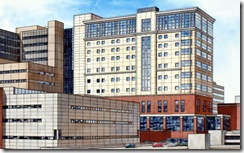

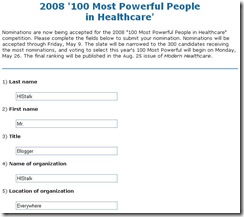


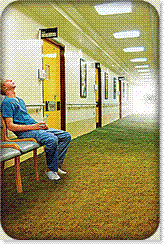

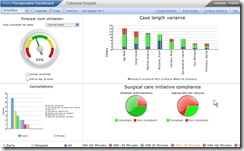





























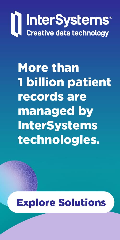



















































The primary point of using the Cloud is using operating expenses vs limited capital ones and avoiding having to update…